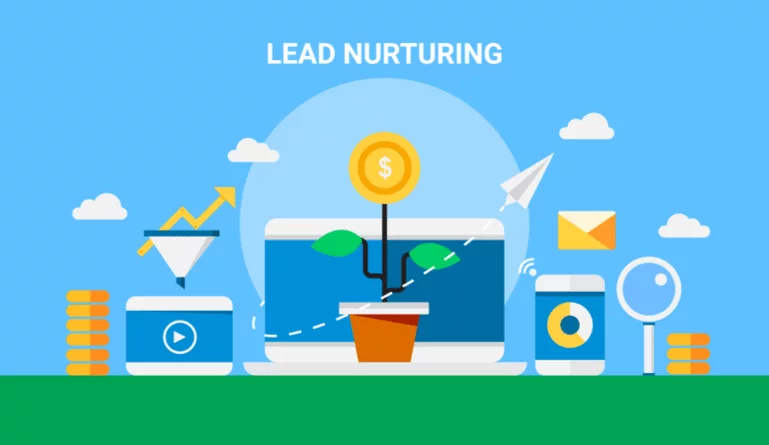Marketing automation has made many marketing efforts faster, easier, and more effective. It can allow you to create consistent contact and connection with customers and prospects as well as make sure that your marketing content is personalized enough to be relevant to your audiences. This leads to better customer relationships, increased conversions, improved brand awareness, and authority, as well as increase customer loyalty.
Automation has been an invaluable tool is helping to enhance lead nurturing strategies that help businesses meet potential customers along their buyer’s journey and encourage customers to continue a relationship after a transaction that can lead to future business.
What are leads and what is lead nurturing?
The most basic way to describe leads is as a potential sale. Leads can come from anymore – business cards collected at trade shows, business contact information collected through website visits, past customers, and even email lists purchased from marketing research companies. Lead nurturing techniques can vary based on the business and specific marketing goals, but there are some best practices that can help you create a solid list of engaging lead nurturing methods.
So what are some lead nurturing techniques you can build with marketing automation?
-
Personalized emails: One of the reasons that emails continue to be a key part of lead nurturing strategies is because of its versatility. It can bring not only consistent content to clients – as it’s a part of most people’s daily personal and work routine – but it can also encompass both a mix of long and short-form content. Plus, it’s easily personalized and targeted so that the right audiences are consistently the most relevant messages, which is crucial in effective lead nurturing. Emails don’t have even better success of meaningful engagement with well-crafted subject lines and event-based timing of emails sent.
-
Multi-channel campaigns: Not everyone opens every email, but you don’t have to lose those connections. People spend their time on other parts of the internet, from websites to social media, and using these channels as a continuation of your lead nurturing is valuable. Plenty of social media automation tools exist that help you bring content to relevant customer segments regularly to help complement other parts of your marketing campaign, from emails to print ads to radio or podcast advertising.
-
Content distribution with segmentation: Segmentation is a game-changing part of marketing. While it’s existed to some degree for nearly as long as traditional advertising – businesses have always been able to communicate with existing and guestimate where direct mail should go based on demographic research – automation tools for social media and email allow for highly targeted segmentation, from job title to company name to social media interests to gender to estimated salary information. All of this is an important part of lead nurturing because the highest quality leads are the ones who will likely care the most the product or service being marketed. This is accomplished best with highly targeted segmentation of quality, relevant content like videos, infographics, whitepapers, blogs, and more.
-
Post-automation follow-up: After the automated part of the lead nurturing, it’s important to remember to follow up with a personal touch. Often a sale is closed or a relationship solidified with a phone call or other kind of timely and personal follow up from someone within the company.
Lead nurturing is an important part of your content strategy and should be carefully considered as part of your marketing plan. Effective lead nurturing techniques, particularly when assisted by automation technology, can lead to more business, increased revenue, greater market share, more engaged and satisfied customers, and ultimately longer-term success for your organization.





